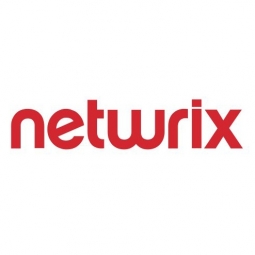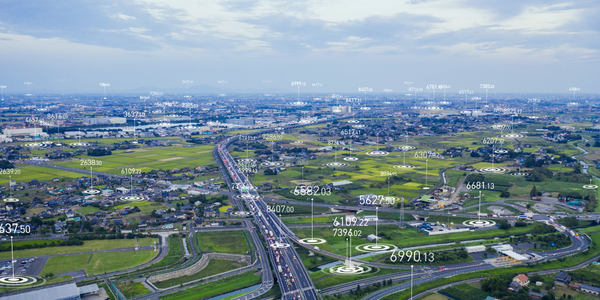Nonprofit Organization Accelerates Data Classification to Comply with GDPR and Saves £80,000 Annually

Applicable Functions
- Facility Management
Use Cases
- Object Detection
- Regulatory Compliance Monitoring
About The Customer
Horizon Leisure Centres is a not-for-profit organization that operates the largest leisure centres in Havant and Waterlooville in the UK. The organization aims to provide facilities and activities that enhance life quality at an affordable price for everyone in the community. In 2017, these centres attracted more than 1.7 million visitors. Despite being in the entertainment and leisure industry, the organization handles a significant amount of data, which needs to be protected in accordance with GDPR regulations.
The Challenge
Horizon Leisure Centres, a not-for-profit organization operating premier leisure centres in the UK, faced a significant challenge in complying with the General Data Protection Regulation (GDPR). The organization needed to identify and classify the data stored across more than 500,000 folders and subfolders and protect it in accordance with GDPR requirements. This was a daunting task, as the organization also had to be ready to satisfy requests from data subjects, such as processing restrictions and erasures. The challenge was not only to avoid penalties for non-compliance but also to ensure that the sensitive data was secure and only accessible to management.
The Solution
Horizon Leisure Centres turned to Netwrix Auditor for a solution. Impressed with its search and reporting capabilities, the organization used the software to optimize the discovery and classification of sensitive data. The software quickly scanned all data and showed the locations of files with regulated information. After reviewing where the sensitive data resided, the organization ensured these locations were secure and only accessible to management. The organization plans to repeat this process on a quarterly or bi-annual basis. Netwrix Auditor's search capabilities also enabled the organization to be ready to address requests from data subjects quickly and accurately. The software also provided control over activities around sensitive data, allowing the organization to detect anomalous actions that might require attention and configure alerts on events that could pose a risk to regulated data.
Operational Impact
Quantitative Benefit

Case Study missing?
Start adding your own!
Register with your work email and create a new case study profile for your business.
Related Case Studies.

Case Study
Remote Monitoring for Environmental Compliance
Emerson wanted to provide a connected environmental analyzer to their customers. They wanted to leverage IoT technologies to provide a software solution that was easy to use, real-time and centralized. Compliance with pollution control board guidelines and the ability to remotely calibrate and troubleshoot these devices was the primary objective. Requirements - Centralized Remote Monitoring. - IoT Based Smart Environmental Analyzers. - Remote Calibration and Troubleshooting. - User Friendly Application. - Reporting & Dashboards. - Compliance with pollution control board guidelines.

Case Study
ELI LILLY ADOPTS MICROMEDIA’S ALERT NOTIFICATION SYSTEM
Pharmaceutical production is subject to a strict set of enforced rules that must be adhered to and compliance to these standards is critically necessary. Due to the efforts of WIN 911’s strategic partner Micromedia, Lilly was able to adopt an alarm notification infrastructure that integrated smoothly with their existing workflows and emergency hardware and protocols. These raw energy sources enable the industrial process to function: electricity, WIN-911 Software | 4020 South Industrial Drive, Suite 120 | Austin, TX 78744 USA industrial steam, iced water, air mixtures of varying quality. Refrigeration towers, boilers and wastewater are monitored by ALERT. Eli Lilly identified 15000 potential variables, but limitations compelled them to chisel the variable list down to 300. This allowed all major alarms to be covered including pressure, discharge, quantity of waste water discharged,temperature, carbon dioxide content, oxygen & sulphur content, and the water’s pH.

Case Study
IoT Solutions Give Commercial Fishing Real-time insights
Technology to support vessels in the commercial fishing industry had not changed significantly since the advent of radar. Over the past 40 years commercial fishing in the United States has continued to be one of the most active, yet regulated industries. The combination of federal regulations and lack of technology created an opportunity for Faria Watchdog to go-to-market with a solution.

Case Study
Conveyor Belt Monitoring
In a smart environment of management, control and industrial automation, one of the key elements to anticipate failures and increase productivity is to be able to monitor the status and use of conveyor belts of any kind of sector, whether it is for logistics or manufacturing.

Case Study
Introduction of AI to Quality Inspection of Consumable Raw Material
In the past, it was necessary for inspectors to visually detect minute foreign substances that rarely got mixed in with raw materials (plants) flowing down the production line.The challenges are:1. difficult to detect visually by inspectors - It was necessary for inspectors to visually inspect foreign objects as small as 1mm, which made it difficult to detect them.2. existing inspection devices cannot cope with the problem - In addition to the fact that the foreign matter is microscopic, both the raw material and the foreign matter come in multiple types and colours and have unspecified shapes, so rule-based image inspection systems could not handle them.3. different conditions for each factory and line - The customer has multiple factories and lines, each with different types of foreign matter, different conveyor speeds, and different inspector skills.
Case Study
Nfairlending Case Study
Erin Goodall, vice president and director of compliance at Valliance Bank, was the sole member of the compliance team. She was responsible for analyzing all the bank’s fair lending data to identify redlining, disparities, and any potential violations of the Community Reinvestment Act (CRA), Home Mortgage Disclosure Act (HMDA) and other laws. This was a time-consuming process, taking up to 96 hours per quarter, in addition to her general compliance responsibilities. She also had to decipher what the results meant and spent hours creating reports to explain the insights to the board, management, and compliance committees.






